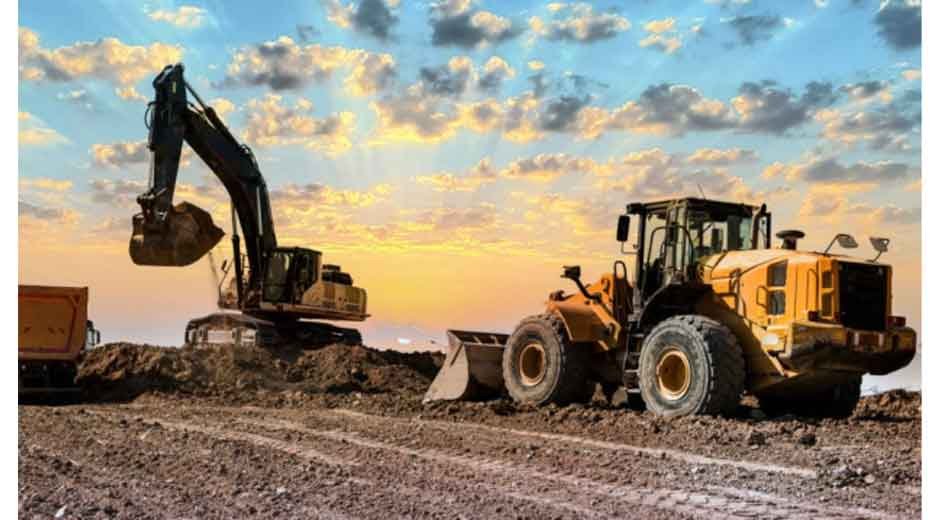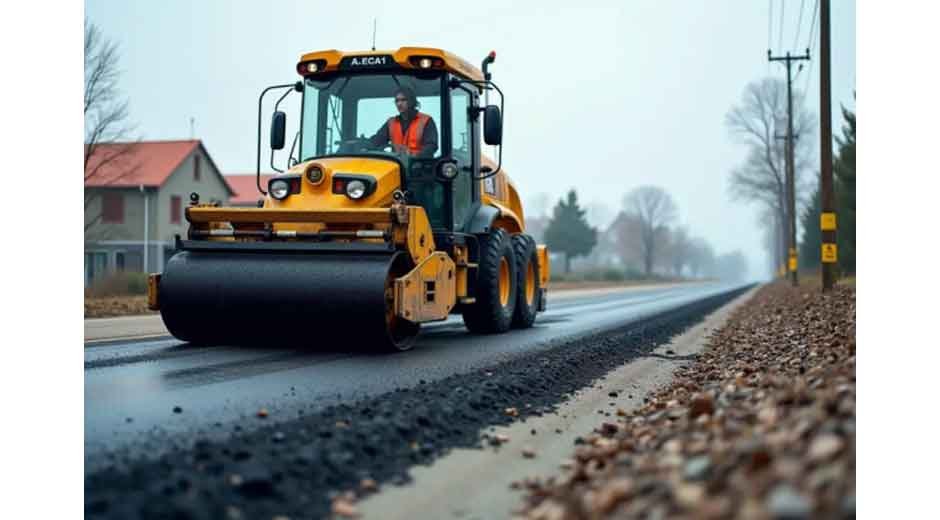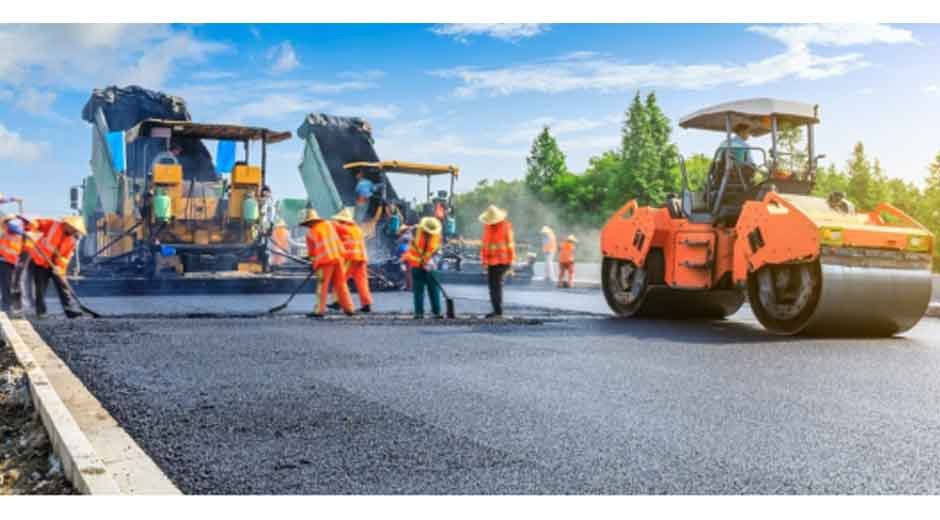There’s more to roads than meets the eye. Building safe and reliable networks between settlements takes meticulous planning. Construction involves multiple phases, from the initial planning stages and site clearance, to paving, surface finishing and marking. Each stage requires serious manpower and a variety of road construction equipment.
Machines for Earthmoving and Site Prep

Once early stages of route planning, ground evaluation, relocating existing infrastructure and obtaining permits have been sorted, building companies start with mobilising their workforce and gathering the appropriate road making equipment. To ensure all projects run efficiently and within set timeframes, comprehensive site preparation is done in several stages:
Site Clearance
This provides a clean worksite free of tress, vegetation, debris, obstacles and existing structures.
Heavy-duty machines regularly used in this phase are crawler, wheeled and mini excavators – involved in digging, trenching and material handling tasks and bulldozers in moving large volumes of earth and debris and clearing trees, stumps, shrubbery, rocks, and other obstacles, as well as levelling ground for a stable working base.
Grading and Levelling
Grading and levelling achieve the desired gradients, consistent with road integrity, driving safety and proper drainage.
Excavators, dozers and backhoes in smaller operations are used in moving excess soil, as well as levelling lower areas. For a smooth surface, compactors and rollers are other pieces of road making equipment that compress the soil and prevent future settling. This also increases the road’s load bearing capacity.
Relocating Existing Utilities and Site and Traffic Management
Water, gas, electricity and communication lines are relocated in conjunction with managing companies. This to prevent accidents during construction and avoid power and supply cuts.
Typical equipment seen in this phase are excavators fitted with grapples and trenching buckets, trenchers, backhoes and dump trucks for material handling. At the same time, roadworks also involve managing existing traffic flow through the area by setting up detours, with traffic controllers, appropriately placed signage and temporary roads redirecting traffic through alternative routes.
Machines for Subgrade Preparation and Layer Construction

Once the road is graded and sloped, construction crews turn to testing the subgrade, the native soil under the asphalt or concrete layer. This is to ensure it can sustain loads and provide adequate support.
Excavators with mulchers, grapples and brush cutter attachments are used in removing roots, stumps and other organic material, while grading buckets, rollers and compactor wheels get another round in ensuring soil density. The soil is checked for moisture content, and can be strengthened with binding and filler materials, including recycled or crushed concrete, crushed bricks, granular fill and aggregate sourced from batch fill plants to enable proper binding and soil stabilisation. This is layered with a gravel spreader.
Layering is necessary for durability. Filler materials are often combined with bitumen to form the road sub-layer.
Here essential road making equipment includes graders in subgrade placement, grid and combination drum and vibration rollers in compacting the sub-layer and trench rollers in compacting drainage areas and confined spaces. Each layer must meet set standards in terms of thickness and overall load bearing, surface uniformity, temperature ratings and moisture content.
Paving and Marking Equipment
Paving is the crucial phase that encompasses placing and compacting asphalt. There are several steps in how this is done. First, sublayers are cleaned to ensure a debris-free surface, with asphalt distributors spraying a thin asphalt prime coat for improved binding.
Prepared asphalt mixes from asphalt plants are delivered on site with insulated haul trucks. Wheeled or tracked asphalt pavers to evenly lay the hot asphalt mix while ensuring layer thickness. The machines also provide minor compaction, before rollers come in. Initial compacting is done with steel-wheeled rollers to remove excess moisture and air pockets, and then followed by pneumatic tyre rollers to seal the asphalt with the underlying aggregate. Final rolling is again done with steel-wheeled rollers.
Removing existing, damaged or older road and asphalt layers is carried out with bitumen profilers and concrete saws attachments for excavators and skid steers. Transition sections, such as roads connecting existing networks, exits, driveways or parking lots require special grading for smooth transverse and longitudinal joints (between lanes). Motor graders with adjustable blades offer precise control and the versatility needed in creating finished and smooth surfaces.
The asphalt is inspected for temperature, density and smoothness and left to cool and cure. Initial drying lasts between 24 and 72 hours, while fully hardened surfaces require between 6 and 12 months. depending on outside temperatures, humidity and general weather conditions.
Marking new roads can be done right after construction. First dried asphalt is cleaned of any debris using ride-on sweepers and scrubbing machines. The surface then is marked with lane stripes, arrows, pedestrian crossings and other markings (depending on the type and location of the road) with thermoplastic or cold paint marking machines with one or more paint spray heads.
Factors When Choosing the Right Road Construction Equipment
The type and size of the road making machine you require depends on the type of road construction and the scope and duration of the project. Highways will naturally incur different needs and costs than rural roads. Space restraints are also a consideration. Large, powerful heavy-duty equipment is more suited to open spaces and more maneuverable and compact equipment where space is tight.
Moreover, project size and deadlines will also mean high-capacity machinery able to operate for hours on end and meet timelines. Many construction companies use a mix of larger and smaller machines, and won’t hesitate to go with used machinery if project needs deem this necessary. This leads to operating costs, including maintenance, parts availability (to prevent downtime), fuel use and aftersales support in new or near-new pieces.
The used equipment market is a good place to search for excavators, bulldozers, skid steers, general attachments and material handling basics like dump trucks. For more specific road construction equipment, also consider specialised equipment resellers, offering a mix of new and used gear, ranging from asphalt pavers, compactors, scrapers, marking machines, rollers, profilers and more. Lastly, consider machinery that complies with local and federal laws and standards in terms of emissions compliance and observing sustainable practices in road construction.






